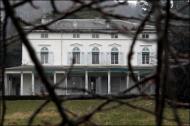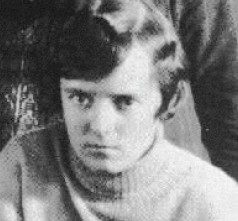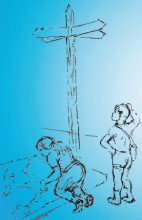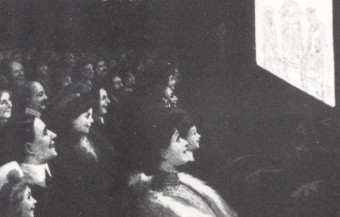The Library of Congress has announced twenty-five new titles that have been added to the National Film Registry. Under the terms of the National Film Preservation Act of 1992, each year the Librarian of Congress, with advice from the National Film Preservation Board, names twenty-five American films deemed “culturally, historically or aesthetically” significant that are to be added to the National Film Registry, “to be preserved for all time”. Which is ambitious. This year’s twenty-five bring the number of motion pictures added to the registry to 475.
The films named include such titles as Bullitt, Dance, Girl, Dance, Close Encounters of the Third Kind, and Oklahoma! But there are always some silents included, and this year among the twenty-five are the following (with the descriptions provided by the Library of Congress):
Mighty Like a Moose (1926)
Actor/director/screenwriter Charley Chase is underappreciated in the arena of early comedy shorts. Chase began his film career in the teens, working for Mack Sennett with the likes of Charlie Chaplin and Fatty Arbuckle. Moving on to the Hal Roach Studios, Chase starred in his own series of shorts. “Mighty Like a Moose,” directed by Leo McCarey, is one of the funniest of his silents. A title card at the beginning tells us this is “a story of homely people—a wife with a face that would stop a clock—and her husband with a face that would start it again.” Unbeknownst to each other Mr. and Mrs. Moose have surgery on the same day to correct his buckteeth and her big nose. They meet on the street later, but don’t recognize each other; they flirt and arrange to meet later at a party. A side-splitting series of sight gags follows including Charley’s “fight with himself.”The Strong Man (1926)
Harry Langdon, widely considered one of the great silent comedians, had a career that can only be described as meteoric. A vaudevillian for much of his professional life, Harry Langdon was discovered and brought to Hollywood by Mack Sennett in the early 1920s. But he languished until lightning struck in 1925, when director Harry Edwards and then-gagman Frank Capra worked with him on three features and several shorts. The features, “Tramp, Tramp, Tramp,” “Long Pants” and “The Strong Man” put Langdon solidly into the foursome Walter Kerr calls “The Four Silent Clowns” —with Charlie Chaplin, Buster Keaton and Harold Lloyd. “The Strong Man” predated “City Lights” by several years with its plot of a meek man in love with a blind woman.Tol’able David (1921)
Henry King (1886-1982) had a 50-year career in Hollywood, winning a reputation as one of the most talented directors in capturing the values, culture, history, personality, and character of the nation. His nostalgia was honest, and often bittersweet. In “Tol’able David,” King tells a coming-of-age story about a youth who must overcome savage, bullying neighbors as he takes on his first job delivering mail in rural Virginia. “Tol’able David” was studied by Russian filmmakers of the 1920s. They were inspired by King’s memorable conjunctions of shots that evoked personalities and emotions without a need for explanatory titles. “Tol’able David” remains a powerful drama and is also known for its craftsmanship, which was tremendously influential on subsequent filmmaking.
Also from the 1920s, though a sound film, is the Robert Benchley comic short, The Sex Life of the Polyp (1928).
The full list of films selected for the National Film Registry 1989-2006 is available here. These are the silents on the Registry (excluding post-1930 amateur, news and experimental films):
Ben-Hur (1926)
Big Business (1929) [Laurel and Hardy]
The Big Parade (1925)
The Birth of a Nation (1915)
The Black Pirate (1926)
Blacksmith Scene (1893)
The Blue Bird (1918)
Broken Blossoms (1919)
The Cameraman (1928)
The Cheat (1915)
The Chechahcos (1924) [independent feature filmed in Alaska]
Civilization (1916)
Clash of the Wolves (1925) [starring Rin Tin Tin]
Cops (1922)
A Corner in Wheat (1909)
The Crowd (1928)
The Curse of Quon Gwon (1916-17) [the earliet known Chinese-American feature]
Dickson Experimental Sound Film (1894-95) [OK, not a silent]
The Docks of New York (1928)
Evidence of the Film (1913) [Thanhouser crime film set in a film studio]
The Exploits of Elaine (1914)
Fall of the House of Usher (1928) [experimental film]
Fatty’s Tintype Tangle (1915)
Flesh and the Devil (1927)
The Four Horsemen of the Apocalypse (1921)
The Freshman (1925)
From the Manger to the Cross (1912)
The General (1927)
Gertie the Dinosaur (1914) [animation]
The Gold Rush (1925)
Grass (1925) [documentary]
The Great Train Robbery (1903)
Greed (1924)
H20 (1929) [experimental film]
Hands Up (1926)
Hell’s Hinges (1926)
The Immigrant (1917)
In the Land of the Head Hunters (1914) [documentary]
Intolerance (1916)
It (1927)
The Italian (1915)
Jeffries-Johnson World’s Championship Boxing Contest (1910)
The Kiss (1896)
Lady Helen’s Escapade (1909)
Lady Windermere’s Fan (1925)
Land Beyond the Sunset (1912)
The Last Command (1928)
The Last of the Mohicans (1920)
The Life and Death of 9413 – A Hollywood Extra (1927) [experimental film]
The Lost World (1925)
Making of an American (1920) [public information film]
Manhatta (1921) [experimental film]
Matrimony’s Speed Limit (1913)
Miss Lulu Bett (1922)
Nanook of the North (1922) [documentary]
Pass the Gravy (1928)
Peter Pan (1924)
Phantom of the Opera (1925)
The Poor Little Rich Girl (1917)
Power of the Press (1928)
President McKinley Inauguration Footage (1901) [Edison film taken at time of his assassination]
Princess Nicotine; or The Smoke Fairy (1909)
Regeneration (1915)
Rip Van Winkle (1896)
Safety Last (1923)
Salome (1922)
San Francisco Earthquake and Fire, April 18, 1906 (1906) [news footage]
Seventh Heaven (1927)
Sherlock Jr. (1924)
Show People (1928)
Sky High (1922)
The Son of the Sheik (1926)
Star Theatre (1901) [building shown being constructed using stop-frame animation]
Sunrise (1927)
Tess of the Storm Country (1914)
There it is (1928)
The Thief of Bagdad (1924)
Traffic in Souls (1913)
The Wedding March (1928)
Westinghouse Works, 1904 (1904) [industrial footage]
Where Are My Children? (1916) [Lois Weber’s anti-abortion drama]
Wild and Wooly (1917)
The Wind (1928)
Wings (1927)
Within our Gates (1920) [Oscar Micheaux’s all-African American drama]
Want to vote for the 2008 selection? They do take into account public nominations – not sure if you have to be a United States citizen for this, but details on where to send your suggestions (limited to fifty titles per year) are here.









